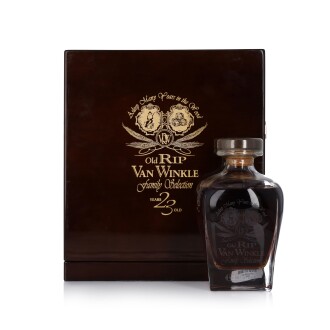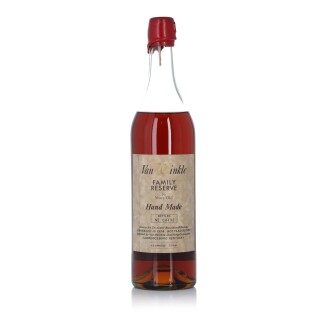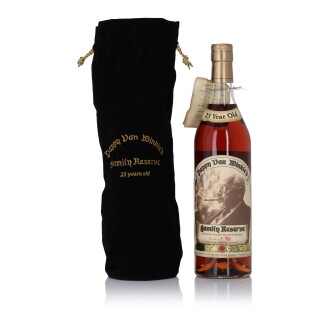T he name Van Winkle is synonymous with great American whiskey. But not all Van Winkle bottles are the same. The company’s history divides in two: There is the whiskey produced after Julian Van Winkle III began distilling and bottling at Buffalo Trace, in 2003, with its uniform age statements and bottle designs. Then there is the wide range of ages, designs and even sources he used before that. While the whiskey made for him at Buffalo Trace is outstanding, the earlier bottles he released are true unicorns and among the most sought-after in the world.

The Van Winkle name traces its history back to a distillery called Stitzel-Weller, co-founded by Julian Van Winkle, affectionately known as Pappy. His family was forced to sell it in 1972, but his son, Julian Van Winkle II, was allowed to keep some of the aging whiskey and received first right of refusal on additional barrels. Eventually his son, Julian III, leased an abandoned distillery in Lawrenceburg, Kentucky, and began his own bottling operation. In addition to packaging whiskey for other companies, he offered his own, using a brand that his grandfather created: Old Rip Van Winkle.
In partnership with Gordon Hue, the owner of a local liquor chain called Cork ’N Bottle, he bottled his first Van Winkle whiskeys from the mid-1980s to mid-1990s, using a distinctive cognacaise bottle. Van Winkle drew on his father’s stocks of Stitzel-Weller whiskey, new whiskey he bought from the distillery, and, occasionally, some exceptional whiskey he bought from a derelict distillery called Boone. Eventually Van Winkle’s sources for aged product began to run out, so he signed a deal with Buffalo Trace to bottle what remained and to distill new whiskey to his specifications.





















